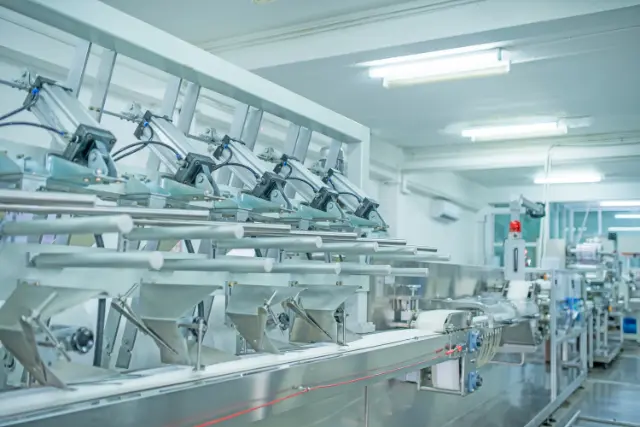Shipping and Logistics Automation: Empowering the Retail Industry
The retail industry relies heavily on efficient and accurate shipping and logistics processes to deliver products to customers on time and within budget. However, traditional manual methods can be time-consuming, error-prone, and unable to keep up with the demands of modern e-commerce.
Shipping and Logistics Automation with Python, AI, and the Cloud
Python, with its powerful libraries and automation capabilities, AI, with its ability to learn and adapt to changing conditions, and cloud-based solutions, with their scalability and accessibility, are revolutionizing shipping and logistics automation. These technologies enable retailers to:
- Integrate shipping systems with order management platforms seamlessly
- Automate label generation and order routing for increased efficiency
- Optimize delivery routes based on real-time data to reduce costs and improve customer satisfaction

Python, AI, and the Cloud: The Power Trio for Shipping and Logistics Automation
Python is a versatile programming language that is ideally suited for developing both unattended and attended bots for shipping and logistics automation. Unattended bots can be programmed to perform repetitive tasks such as order processing, label generation, and inventory management, while attended bots can assist human workers with tasks such as customer service and order fulfillment.
Cloud platforms offer a wide range of features and capabilities that make them ideal for orchestrating shipping and logistics automation. These platforms provide:
- Scalability: Cloud platforms can easily scale up or down to meet changing demand, ensuring that your automation solution can handle even the most demanding workloads.
- Reliability: Cloud platforms are highly reliable, with built-in redundancy and disaster recovery mechanisms to ensure that your automation solution is always available.
- Security: Cloud platforms provide robust security features to protect your data and applications.
AI can be used to improve the accuracy and efficiency of shipping and logistics automation. AI techniques such as image recognition, natural language processing (NLP), and generative AI can be used to:
- Identify and classify objects: AI can be used to identify and classify objects in images, such as products, packages, and shipping labels. This information can be used to automate tasks such as order picking and inventory management.
- Extract data from documents: AI can be used to extract data from shipping documents, such as invoices, packing slips, and bills of lading. This data can be used to automate tasks such as order processing and payment reconciliation.
- Generate natural language text: AI can be used to generate natural language text, such as customer service responses and shipping notifications. This can help to improve the customer experience and reduce the workload on human workers.
By combining the power of Python, AI, and the cloud, businesses can create shipping and logistics automation solutions that are:
- Efficient: Automation can help to streamline shipping and logistics processes, reducing costs and improving efficiency.
- Accurate: AI can help to improve the accuracy of shipping and logistics tasks, reducing errors and improving customer satisfaction.
- Scalable: Cloud platforms can help to ensure that shipping and logistics automation solutions can scale to meet changing demand.
- Reliable: Cloud platforms provide built-in redundancy and disaster recovery mechanisms to ensure that shipping and logistics automation solutions are always available.
- Secure: Cloud platforms provide robust security features to protect data and applications.

Building Shipping and Logistics Automation with Python and the Cloud
1. Data Collection and Analysis
The first step in building a shipping and logistics automation solution is to collect and analyze data about your current processes. This data will help you to identify areas for improvement and to develop automation strategies that are tailored to your specific needs.
2. Process Design
Once you have collected and analyzed your data, you can begin to design your automated processes. This involves identifying the tasks that you want to automate, as well as the steps involved in each task.
3. Automation Development
Once you have designed your automated processes, you can begin to develop the code that will implement them. Python is an ideal language for developing shipping and logistics automation solutions because it is:
- Versatile: Python can be used to develop a wide range of automation solutions, from simple scripts to complex enterprise applications.
- Powerful: Python has a rich set of libraries and modules that make it easy to develop sophisticated automation solutions.
- Cross-platform: Python can be used to develop automation solutions that run on a variety of platforms, including Windows, Mac, and Linux.
4. Deployment and Monitoring
Once you have developed your automation solution, you need to deploy it to your production environment. This involves setting up the necessary infrastructure and configuring your automation solution to run on a regular basis.
5. Data Security and Compliance
Data security and compliance are important considerations for any business, but they are especially important for businesses that operate in the retail industry. Python and cloud platforms provide a number of features and capabilities that can help you to ensure that your data is secure and compliant with all applicable regulations.
Advantages of Building Shipping and Logistics Automation with Python
There are a number of advantages to building shipping and logistics automation solutions with Python, including:
- Flexibility: Python is a flexible language that can be used to develop a wide range of automation solutions. This makes it ideal for businesses that have complex or unique shipping and logistics requirements.
- Scalability: Python is a scalable language that can be used to develop automation solutions that can handle large volumes of data and transactions. This makes it ideal for businesses that are growing rapidly or that have seasonal fluctuations in their shipping and logistics volumes.
- Cost-effective: Python is a free and open-source language. This makes it a cost-effective option for businesses that are looking to develop shipping and logistics automation solutions.
Algorythum’s Approach to Shipping and Logistics Automation
Algorythum takes a different approach to shipping and logistics automation than most BPA companies. We believe that off-the-shelf RPA tools are not always the best solution for businesses. These tools can be expensive, inflexible, and difficult to integrate with existing systems.
Instead, we take a custom approach to shipping and logistics automation. We work with our clients to develop tailored solutions that meet their specific needs. Our solutions are built using Python and cloud platforms, which gives us the flexibility and scalability to meet the demands of even the most complex shipping and logistics operations.
If you are looking for a shipping and logistics automation solution that is flexible, scalable, and cost-effective, then Algorythum is the right partner for you.

The Future of Shipping and Logistics Automation
The future of shipping and logistics automation is bright. As technology continues to develop, we can expect to see even more innovative and efficient automation solutions emerge. Some of the potential possibilities for future development include:
- Artificial intelligence (AI): AI can be used to improve the accuracy and efficiency of shipping and logistics automation. For example, AI can be used to:
- Identify and classify objects in images, such as products, packages, and shipping labels.
- Extract data from shipping documents, such as invoices, packing slips, and bills of lading.
- Generate natural language text, such as customer service responses and shipping notifications.
- Blockchain: Blockchain is a distributed ledger technology that can be used to create secure and transparent shipping and logistics networks. Blockchain can be used to track the movement of goods, ensure the authenticity of products, and facilitate payments.
- Internet of Things (IoT): IoT devices can be used to collect data from shipping and logistics operations. This data can be used to improve the efficiency of automation solutions and to provide real-time visibility into the movement of goods.
Subscribe to Algorythum
To stay up-to-date on the latest shipping and logistics automation trends, subscribe to our blog. We publish regular articles on a variety of topics, including:
- The latest shipping and logistics automation technologies
- Case studies of successful shipping and logistics automation implementations
- Tips and advice on how to get started with shipping and logistics automation
Contact Algorythum
If you are interested in learning more about how shipping and logistics automation can benefit your business, contact Algorythum today. We offer a free feasibility and cost-estimate for custom automation solutions.
We look forward to hearing from you!

Algorythum – Your Partner in Automations and Beyond
At Algorythum, we specialize in crafting custom RPA solutions with Python, specifically tailored to your industry. We break free from the limitations of off-the-shelf tools, offering:
- A team of Automation & DevSecOps Experts: Deeply experienced in building scalable and efficient automation solutions for various businesses in all industries.
- Reduced Automation Maintenance Costs: Our code is clear, maintainable, and minimizes future upkeep expenses (up to 90% reduction compared to platforms).
- Future-Proof Solutions: You own the code, ensuring flexibility and adaptability as your processes and regulations evolve.









